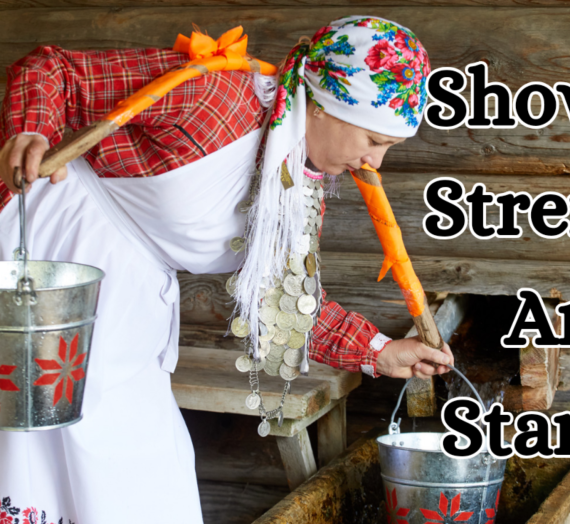What fireproof building material has been used since roughly 7500 BC? What challenges might your character face when learning to make bricks? Could these ancient skills prove useful in the zombie apocalypse? Will I throw a brick at a zombie? Find out on this episode! Stick around to the end to find out what could go wrong.
Welcome to Writing Rural with Alley. I’m Alley and this is episode number 33, Historical Brickmaking. Today I have special guest host Elizabeth Jacobson. Elizabeth is the author of Not by Sight, a retelling of the biblical account of Joseph. It is currently a double semifinalist for the Carol Awards. Having the honor of beta reading her book, I think she deserves them both! In honor of her book, I have invited her to host today, as I was fascinated by the way she worked in showing how bricks were made in ancient Egypt! So without farther ado, Elizabeth, take it away.
Hey, folks! My name is Elizabeth Jacobson and I’m your guest host today.
It’s 4,000 BC. Or 4,000 AD and the 23rd year of the Zombie Apocalypse. You pick. Either way, your character wants to stay dry, not too hot and not too cold, and relatively safe in their dwelling. What do they choose to build with? Bricks! ! These sturdy, insulating little blocks of earth have been used for thousands of years.
We first have record of bricks being used all the way back in 7500 BC, at a now-historical site in modern-day Turkey called Tell Aswad. The type of brick used here was a very early form of what we call mudbrick.
We have record of mudbrick being used in many different parts of the world – in the middle east, the Americas, and in what is now India and China. In the Americas, we now know it as adobe, a word that the Spaniards imported when they reached the New World.
The typical process for making mudbricks involves creating a mixture of clay soil, water, and organic matter, such as straw, chaff, or even animal dung. They are not fully made of clay. Without the binding properties of organic matter, a mudbrick is not strong enough and crumbles easily.
It’s important to note that around the world, different areas have different soil types and properties. For instance, in the American Southwest, you can add sand to the soil and skip the organic matter, which can be undesirable in that it attracts insects and moisture, or may rot away over time. For this reason, there is no single recipe for mudbricks. It’s strongly advised that people do some tests and experiments with their materials before diving headfirst into mudbrick-making. However, there is a very broad ratio of ⅓ clay, ⅔ sand, and organic matter as necessary, which would, of course, adjust the fractional amounts.
The mudbrick mixture must be stirred and kneaded. Some cultures stirred it by hand, others with their feet. Different cultures traditionally required different kneading times, and some required that you let it rest and then come back and knead some more. I can’t find an exact answer on this, but my guess would be that it’s due to the different soil properties and weather around the world.
The mixture would be, eventually, formed into bricks using molds and then left out to dry in the sun. Some cultures dried the molded bricks for a week, others for a handful of days, after which they were rotated onto their sides and then dried for months. Again, it all depends on the weather, humidity, and soil.
Now, around 4400 BC in China, we have the first evidence of fired bricks. In case you haven’t put it together, it would be pretty difficult to make mudbricks in the cooler or wetter regions of the world, because they have to be dried outside in the sun. Fired bricks are dried in a kiln, eliminating that problem entirely. Fired bricks also don’t require any organic matter or sand as a stabilizer. Clay and water will do! They are also much stronger than traditional mudbricks. Just mix up those two ingredients, mold, dry (how long depends, again, on the weather), and fire away! But, be warned, you’ll need a kiln that can reach temperatures over 600 degrees – and possibly much higher, depending on the clay composition. Generally, the firing process could take several days.
We have the Roman Empire to thank for spreading brickmaking across Europe. The Romans learned about fired bricks from the Greeks and first experimented with fired bricks around the time of Christ. Their legions carried portable kilns with them all throughout the Empire. Typical Roman wall construction included alternating layers of bricks and rocks, for added strength.
Now, bricks are useful for more than just walls and building homes. Your character could encounter them just about anywhere, as they can also be found as parts of castles, keeps, roads, pavement, cisterns, well houses, bridges, fireplaces, hearths, basements, cellars, storm shelters, root cellars, retaining walls, irrigation, brick ovens, floors, archways, city walls, cathedrals, vaults, tombs, supporting underground caverns, and more!
It’s also important to note that bricks are only as good as the mortar between them! Mortar is the substance that binds individual bricks together, creating stable construction. For that reason, it’s important that the mortar holds similar properties to the bricks themselves. For instance, it reacts to moisture similarly, and expands and contracts with heat and cold at a similar rate – otherwise, you’ll get cracks!
Mortar came in various types. In the Americas, a mud-based mortar was used. In Ancient Egypt and the Harappan civilization in India, clay or gypsum-based mortar was used.
Eventually, new forms of mortar were created. In the west, the traditional Ancient Egyptian method was replaced by lime mortar, made of slaked lime, water, and sand. The Ancient Chinese developed sticky-rice mortar in about 500 AD, which was even stronger than lime mortar. It was made of a mixture of slaked lime and sticky-rice soup. The still-neat lines of the Great Wall are a testament to its strength!
Lastly, it’s important to note that brickmaking is a learned skill. It is either learned from someone else who knows what they are doing, or it is learned through trial and error, and it’s a skill that would be passed down from one generation to the next. Also, when a character moves from one region to another, they will almost certainly have to adapt their brick-making process to suit the materials in the new area.
Brickmaking holds potential as a way to make income in a historical or post-apocalyptic setting. While someone else might know how to make the bricks, it takes time, energy, and patience to make them in large quantities if they want to build anything. Hence the need for a dedicated brickmaker in the area. It is also a great workout!
Fun fact: The standard brick of today weighs 4.3 pounds or 1.95045 kilograms.
What could possibly go wrong?
Likely to go wrong:
Your character’s mixture of clay, water, and straw/organic matter (if needed) is proportionally off and the bricks are useless. Like I mentioned earlier, tests on materials are always advised before someone steams ahead with brickmaking, so that adjustments can be made.
Also likely to go wrong:
Your character fires the bricks at the wrong temperature and/or for the wrong amount of time that the clay type from their area needs, resulting in unusable bricks that may be cracking, crumbling, burned, deformed, or prone to water retention.
Possible to go wrong:
Your character uses the wrong type of mortar for their bricks. Like I mentioned before, mortar must have similar properties to the bricks it’s holding together. In this case, the construction might crack if exposed to moisture, heat, cold, etcetera, because the materials are reacting differently.
Also possible to go wrong:
Your character didn’t use the right kind of mortar, and water got into the construction. It froze, defrosted, and then there was water leaking. This would be very unwanted in a house or root cellar, and could be potentially deadly in a cistern or well, as it could lead to the water becoming contaminated.
Unlikely to go wrong:
Your character falls into the wet brick mixture while kneading it with their feet and injures themself!
Also unlikely to go wrong:
Your character was inside their brick house when an earthquake hit, and their house collapsed on them. Bricks are strong and sturdy, but they are not designed to withstand the side to side shaking motion of an earthquake!
Improbable, but technically still in the realm of possibilities:
Your character falls into the wet brick mixture while kneading it with their feet and hits their head. They fall down unconscious and drown in the muck. Yikes!
Improbable, but technically still in the realm of possibilities:
Your character falls into the wet brick mixture while kneading it with their feet and hits their head. They fall down unconscious and when they wake up, they have hardened bits of brick muck stuck to them.
Thanks for listening! You can also find me on Instagram, Facebook, or my website at headdeskliz. That’s @ H E A D D E S K L I Z on Instagram and Facebook, and my website is headdeskliz.com. You can leave a comment or check out my book, Not by Sight: a novel of the patriarchs, which includes brickmaking! Monotonous brickmaking, to be precise. Very monotonous brickmaking. You can find this episode’s shownotes and helpful links to learn more on Alley’s website, Alleyhart.com. Subscribe and follow Alley for more episodes! If you’re on YouTube, you can drop her a comment. A new episode comes out every Monday! Until then, happy wordsmithing!
Find Elizabeth Jacobson here!
Website: https://headdeskliz.com/
Instagram: https://www.instagram.com/headdeskliz/
Facebook: https://www.facebook.com/headdeskliz/
Elizabeth’s book, Not by Sight: (Note, I get no composition or kickback for this, and am not being paid)
Helpful links to learn more:
Israelite Bricks:
How to make mud bricks (AKA adobe bricks):
https://pubs.nmsu.edu/_g/G521/index.html
Sticky rice mortar:



